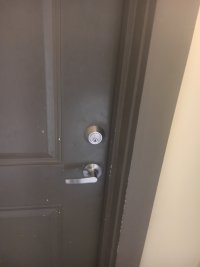LGreene
REGISTERED
Did they send this to you along with a correction notice, or did you ask the question? If they provided this reference as a reply to your question, move on as you meet these conditions.
Basically, I was contacted after the AHJ said that the installed locks are not compliant with the ADA because of the number of operations required to unlock the door from the outside. There was no mention of the size/shape of the thumbturn, difficulty holding the credential, etc. I have not spoken with the AHJ directly, and probably won't have the opportunity to. I'm just trying to provide the relevant information to those who are directly involved, and to make sure that I haven't been missing something with regard to the number of operations to unlock the door.

